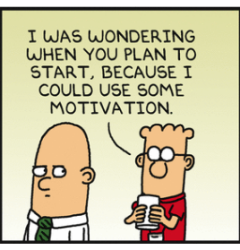Peer-to-Peer Recognition Ideas and Best Practices
- By admin
- No Comments
17 Dec

Peer-to-Peer Recognition Ideas and Best Practices
As a term and concept, employee recognition is getting a lot of limelight these days, and for good reason. It is, after all, the foundation of organizational success. Why? Well, employee recognition essentially means timely acknowledgment and appreciation of employee skills, achievements, behavior, or efforts in achieving goals and supporting the organization’s growth.
Now, there are many kinds of recognition ideas that a company can implement. A few ideas require financial backup, while others need just time and an open mind.
One of the most successful employee recognition programs to try without blowing up your budget is peer-to-peer recognition. It definitely takes time and effort to build such a program. However, once that is done, you can sit back and watch your team interact better, praise without inhibitions, and grow as a community.
What does peer-to-peer recognition really mean?
Peer-to-peer recognition involves appreciation and recognition from coworkers. Instead of only the management recognizing employee efforts, coworkers can identify and appreciate good work or desired excellent behavior within the organization.
If you think, it really makes a lot of sense. Coworkers get to witness and assess an each other’s talents, abilities, and attitude closely and more often. Their appreciation, as a result, can be highly inclusive and personal to the person being recognized.
What are the benefits?
All employee recognition ideas are beneficial to both the employees and the management. Here is a list of benefits that peer-to-peer recognition offers.
- It avoids oversight – Sometimes, the management is placed so high in the hierarchy that they miss the performance of a few worthy employees down the line. Peer recognition can recognize such opportunities, motivate the employee and bring them to the management’s attention.
- It improves productivity and team efforts – Working in a team where people endorse and appreciate one another is a motivating experience. As a result, employees are constantly encouraged to work better and get more productive.
- It improves overall employee experience – How happy and how recognized an employee is at the workplace determines the overall employee experience. Creating a culture of peer recognition by establishing such employee recognition programs makes your organization a happy and satisfying place to work in.
What does research say about peer-to-peer recognition?
Out of all the popular employee recognition ideas, peer recognition is widely discussed because of its potential to impact employee experience and engagement. Both these can improve productivity and increase business profits, in turn.
Surveys show that 57% of people who worked in companies that had newly introduced peer-to-peer recognition programs ended up with higher productivity levels.
According to a recent survey, peer recognition and public recognition are two of the most valued employee recognition strategies for millennials. Another survey by the American Psychological Association (APA) confirms the same.
If your workforce is majorly millennials, then peer-to-peer recognition is what you should be focusing on.
JetBlue decided to create a simple peer recognition program where people get to nominate someone for their everyday contributions. According to the company, for every 10% increase in the recognition process, there was a 3% increase in employee retention rate and a 2% increase in employee engagement rate.
How does peer-to-peer recognition work?

The first-line people who benefit from an employee’s job are the coworkers. All employees are part of a team, and an employee’s talent, efforts, and behavior will affect the people who work with them.
Peer-to-peer recognition works by creating a culture of trust and dependency. These factors play a vital role in uplifting the team’s efficiency as a whole.
Such recognition processes also bring down disagreements and disputes within coworkers and help people recognize their positives and offer encouragement.
With a well-designed peer recognition program, the management can focus on other business priorities and watch the employees back up one another holistically.
Are you looking to build a successful rewards and recognition program, inclusive of peer recognition? Check out PossibleWorks’ latest blog then.
How to tie into your company’s overall recognition System?
If companies have their own employee recognition ideas and practices in place, there is no need to redesign the entire structure. All you need to do is create an add-on. Apart from all the other kinds of recognition ideas you use, invest in peer recognition.
PossibleWorks’ employee recognition tool helps your employees to endorse and appreciate one another on a common platform. These tools are straightforward and very simple to use. We have designed them to support your overall rewards and recognition System. Such insights can also add potential input source for appraisals.
You can customize these tools to match your existing system with ease. Employees can gamify the process by giving out badges, creating avatars, winning titles, and enjoying the process of peer recognition.
Here are a few things to note when it comes to creating effective employee recognition System.
- Unify your recognition processes onto a single platform.
- Recognition needs to be timely.
- Over recognition and under recognizing can both turn out to be problematic in the long run.
- Show your employees that you take peer recognition seriously by including it as an input during appraisal discussions.
- Encourage employees to send out specific recognition. Terms like ‘good worker’ or ‘helpful’ may not be enough.
- Make sure your peer recognition tool is visible to everyone within the organization.
Peer-to-peer recognition can be your best employee retention strategy
Remember that nowadays, the right recognition matters more than monetary benefits.
Employee recognition are critical to improving your company’s retention rate. A certain study recorded the responses of 1700 employees and asked them why they wanted to switch jobs. 55% of these respondents agreed that lack of recognition was the first reason why they wanted to switch jobs.
An organization where employees respect and appreciate one another is where employees will want to come back to every day. There would be lesser thoughts of switching jobs because employees build better relationships with their peers and know their efforts are appreciated by their coworkers.
Avoid common pitfalls
All said and done, peer-to-peer recognition can go wrong if they are not planned or executed right. Here are some of the common pitfalls that need to be controlled for these programs to work well.
- Recognizing inappropriate behavior – An employee may be continuously endorsed for being very funny but is that a required workplace behavior? The management needs to ensure people notice and appreciate behaviors and skills that make a difference in the workplace.
- Unworthy recognitions – Peers can’t keep recognizing and endorsing people for simply doing their task and nothing extra. This is going to bring down the importance of the recognition system.
- Partial recognitions – Do you see a group of employees who are friends constantly endorsing one another on the platform? Employees need to be trained to use the platform fairly and appreciate someone only when they mean it.
Conclusion
The trick to creating a sustainable peer-to-peer recognition is to be consistent and make the process hassle-free. Invest in tools that support such worthy employee recognition and train your employees to use them regularly.
Getting into the habit of recognizing team members can create a positive workplace experience for all involved. It, over time, can help improve productivity and boost business growth. If you need help for creating a sustainable and effective peer-to-peer recognition solution, get in touch with us.



